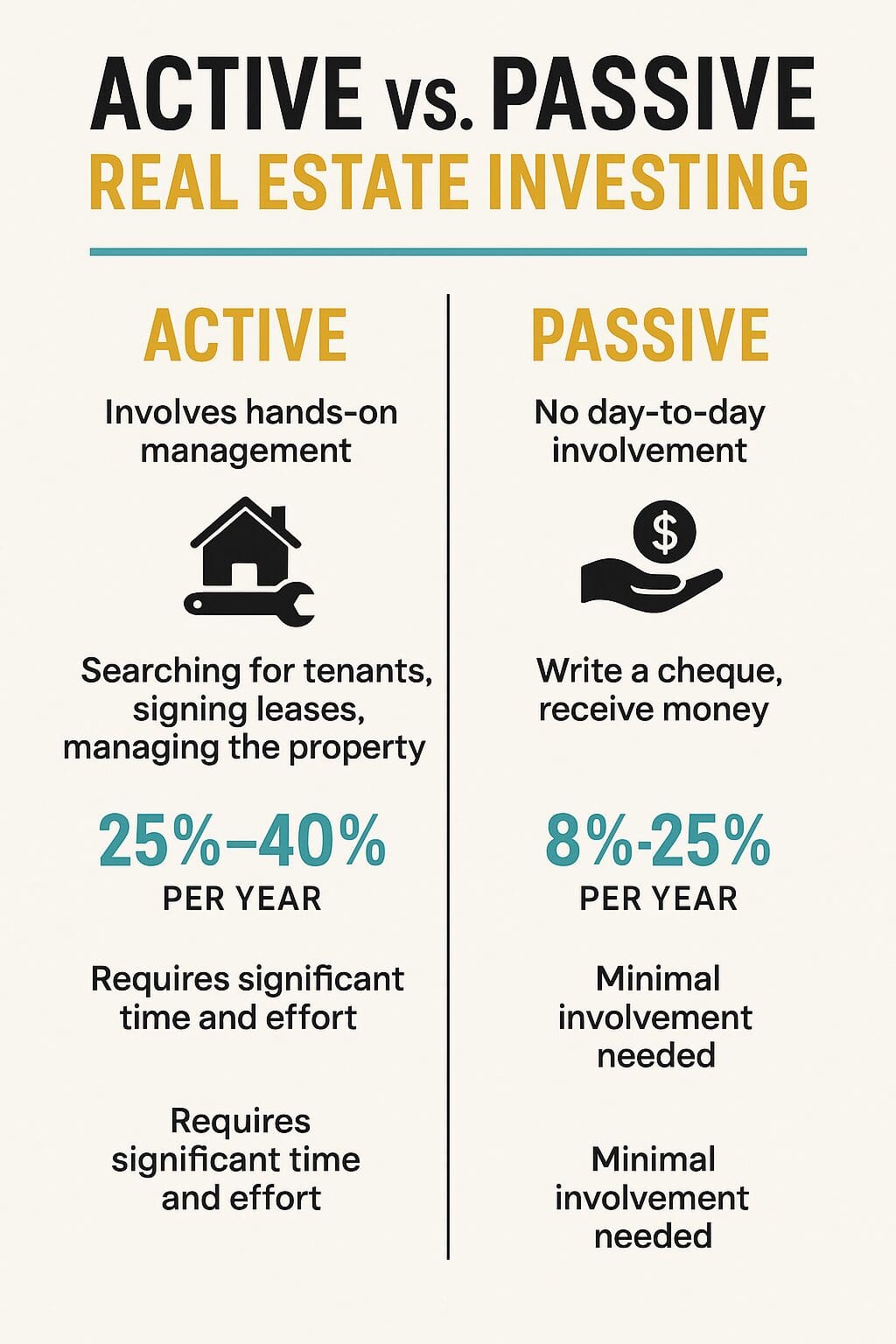
Over the past week, we’ve had conversations with several people who are eager to get started in real estate investing.
It’s one of the most accessible ways to build long-term wealth in Canada. But it’s important to understand that there are two very different paths you can take:
Active investing and passive investing.
Let’s break down what each one involves, and how they differ when it comes to effort, risk, and returns.
What is Active Real Estate Investing?
Active investing means you’re in the trenches. You’re doing the legwork—searching for properties, running the numbers, screening tenants, negotiating leases, managing the property, and maybe even fixing a leaky faucet or two.
In this approach, you’re the driver of your investment’s performance.
But here’s the payoff: when done well, it’s not uncommon to see returns in the range of 25% to 40% per year. That comes from three main sources:
-
Principal growth (from paying down the mortgage),
-
Monthly cash flow (rents minus expenses), and
-
Appreciation (the property increasing in value).
Let’s say you invested $10,000 into an active deal. If all goes well, that investment could grow to $12,500 to $14,000 within 12 months.
That may sound almost too good to be true—especially compared to the 1%–2% most people earn in a traditional savings account. But I’ve seen it happen many times.
Of course, these returns come at a cost: your time, energy, and sometimes, your sanity.
Being a hands-on landlord or active partner can be stressful. Tenants call at inconvenient hours. Repairs never happen on schedule. Budgets get stretched.
💡 Pro tip: You can always outsource property management to reduce your workload—but be aware that it eats into your profits.
What is Passive Real Estate Investing?
On the flip side, passive investing is exactly what it sounds like: you invest your money and let someone else do the work.
You write a cheque.
You receive updates.
You (hopefully) collect returns.
No tenant calls. No drywall dust. No late-night Google searches for a plumber.
While the returns may not hit 40%, many passive opportunities in real estate still offer 8% to 25% annual returns, depending on the project, the market, and the timeframe.
Some Passive Investment Options We Like
One of our current favourites is a multi-family development project with Faris Capital Partners, which is forecasting around 20% annual returns.
The minimum investment is fairly high — $100,000 USD — but it’s a well-structured, hands-off opportunity with a proven team behind it.
If that’s too steep, there are also excellent lower-cost passive investments available through groups like Greybrook Realty Partners or Scott McGillivray’s Fund, with buy-ins as low as $25,000.
Which Option Is Right for You?
It really comes down to how involved you want to be.
If you’re willing to put in the effort and have a bit of a tolerance for chaos, active investing can generate exceptional long-term returns… and give you a great education along the way.
If you’d rather not take calls about toilets and tenants, passive investing gives you a way to grow your wealth without giving up your evenings and weekends.

Final Thoughts
There’s no one-size-fits-all answer. The best investors often do a mix of both—starting with passive investments to get their feet wet, and then graduating to active deals as their confidence grows (or vice versa).
Whether you’re ready to get your hands dirty or want your money to do the work, there’s a strategy that fits your goals.
📩 Have questions about getting started? Reach out any time — we’re always happy to talk real estate investing.